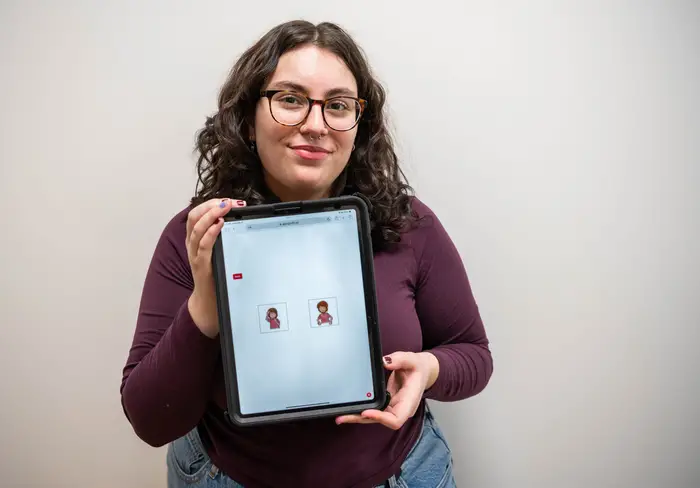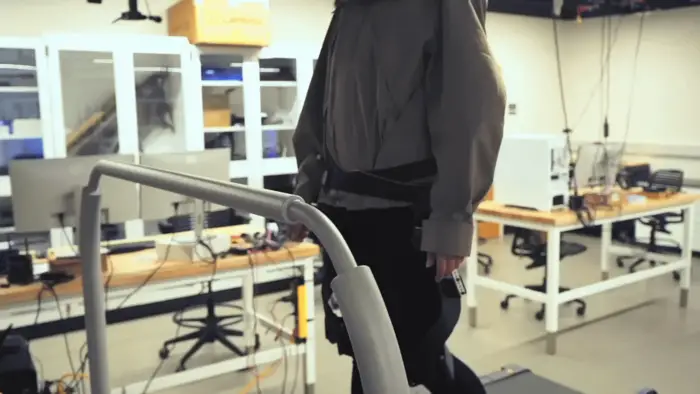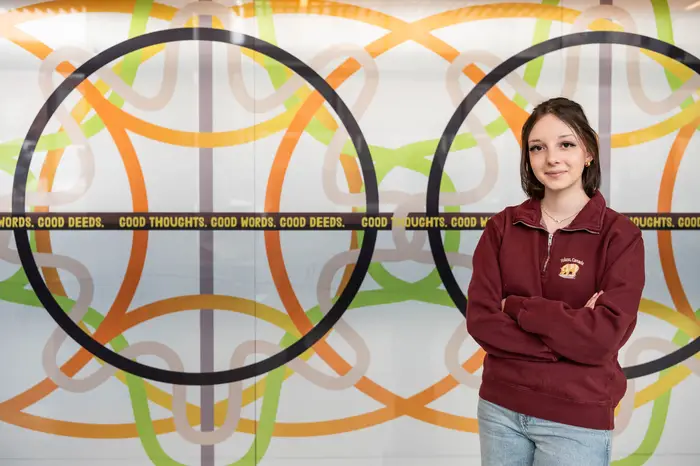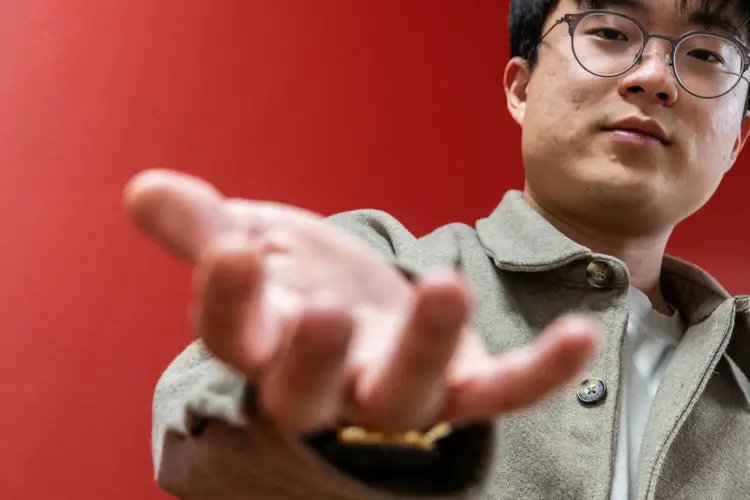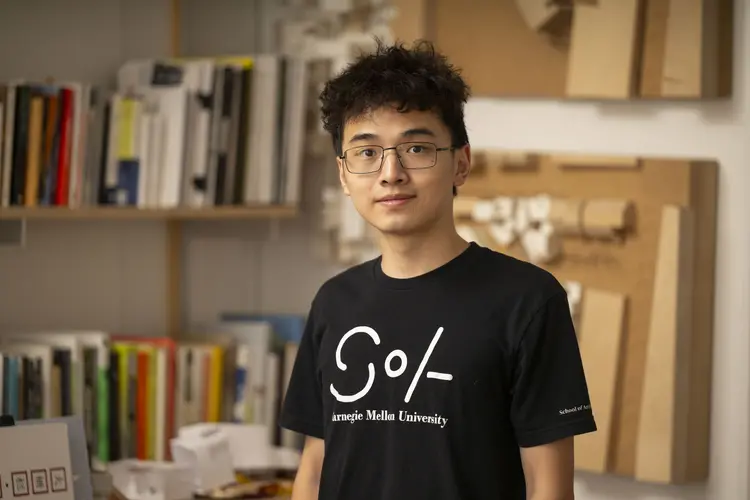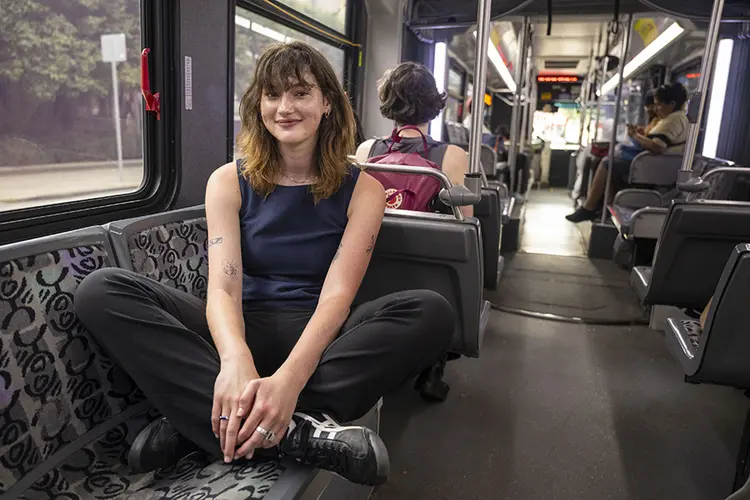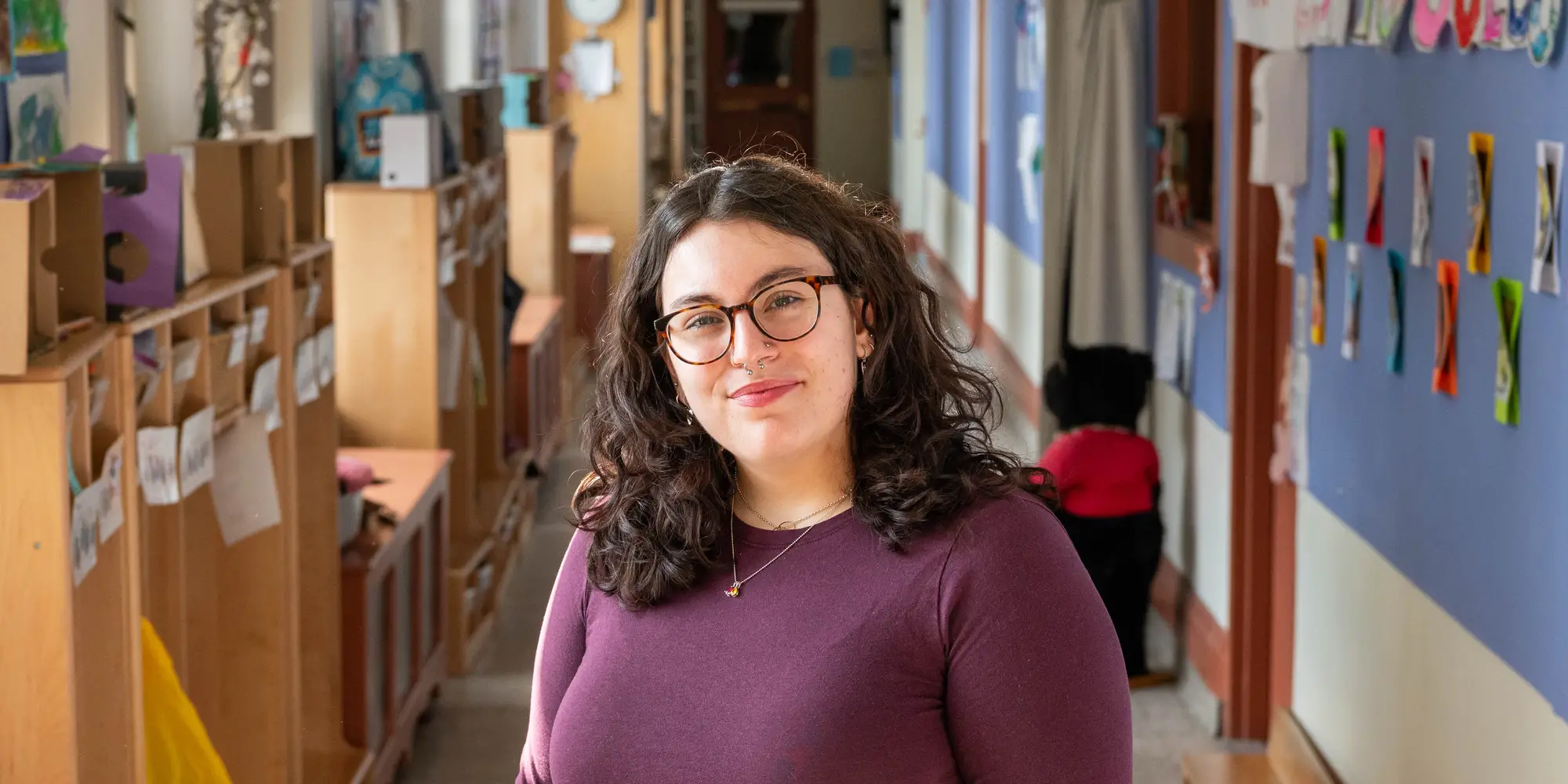
Summer Undergraduate Research Fellows Take On Accessibility and Quality of Life Questions
Media Inquiries
To help students conduct research that may fall outside of the usual curricular, funding, or time restrictions of the typical semester, Carnegie Mellon University’s Office of Undergraduate Research and Scholar Development(opens in new window) (OURSD) offers Summer Undergraduate Research Fellowships(opens in new window) (SURFs) each year. The opportunity serves as a way for students to explore their academic and career interests beyond the classroom setting.
Applicants who are selected for the program are provided a stipend, intended to support them as they complete on-campus research throughout the summer. Students are encouraged to pursue any research endeavors that align with their interests, and are not limited to their major or discipline.
SURF fellows are provided support and guidance by faculty mentors for what is often their first major research experience. And while students must apply individually, they have the opportunity to work with teams of other undergraduate as well as graduate students in order to jointly develop and share expertise in their chosen field.
In the 2024 SURF cohort, some students sought to create technical solutions to improve everyday living for those diagnosed with disabilities. Others expanded their understanding of topics relevant to accessibility and disability, including education, childhood development and linguistics. Four students were among those working on such projects: Noelia Flores, Allison Dayton, Manaen Hu and Veronica Pimenova.
"We are incredibly proud that the SURF program has provided openings for these ambitious undergraduate researchers to produce new knowledge that will benefit those affected by accessibility issues," said Richelle Bernazzoli, director of OURSD.
Noelia Flores: How does confidence affect children at the preschool level?
Noelia Flores is a senior studying psychology at Carnegie Mellon(opens in new window), and a researcher in the Infant Language Learning Lab(opens in new window) run by Associate Professor Erik Thiessen(opens in new window). Her SURF study has centered on the effect that confidence has on preschool children’s uptake of feedback.
The process involved recording preschool students' responses to a simple survey, asking them to pick one of three or four faces to represent their confidence in solving a specific problem. “We're providing kids with visual matrix problems — essentially puzzles — and we're asking them to answer them multiple choice style,” she said.
Flores noted that the participants ranged in age, and some problems were more difficult than others. The study’s sample was limited to participants from the Pittsburgh area, and she notes that more would need to be conducted to have a comprehensive understanding of feedback and confidence in learning across demographics, including those with learning disabilities.
She also noted that because young children tend to be overconfident, the scale provided to students has gone through iterative change to help them more accurately reflect how they feel.
However, early results provide several insights that could warrant further study. For example, she said the depth of feedback provided to children seemed to be an important indicator of whether or not students can improve performance on problems.
“In some cases, it can be a bit discouraging when the children receive feedback without any further teaching of how to solve the problem. If we're just telling them, ‘Oh, you've gotten it wrong,’ several times in a row because they're struggling, it can impede their performance.”
When students do receive detailed feedback, Flores explained, the students struggling with more complex problems benefit most, “whereas for some of the easier ones, the feedback isn't that helpful.”
Flores said that while her work is not explicitly aimed at understanding or treating learning disabilities, witnessing the way education systems struggled to properly address the needs of a family member with a learning disability inspired her to reexamine the educational experience, and find ways to improve it.
Her research, she said, may someday help discover the impact confidence and feedback have on individualized student growth and help children thrive in learning environments. She said she is particularly excited about the prospect of helping to improve resources for students in public schools.
"Accessibility is not just something for people with disabilities," Flores said. "It benefits all kids, because more support for everyone is never going to be a harmful thing. Any way in which we can improve accessibility will create improvements for all students."
Allison Dayton: How does motor control affect certain sounds?
Allison Dayton is a sophomore statistics major in the Dietrich College of Humanities and Social Sciences(opens in new window), and language has long been important to her. As a scholar in the National Security Language Initiative for Youth(opens in new window) program, she traveled to Seoul for three months in high school to study Korean language and culture. The program gave her a greater appreciation for the intricacies of linguistics and second language acquisition.
Dayton's inquiries through the SURF program and this school year focus on speech motor control and perception of voicing in fricatives — sounds most frequently associated with letters like S and Z. Her research took place under the mentorship of Professor Christina Bjorndahl(opens in new window), who runs CMU's Phonetics/Phonology Interface (Ph2IT) and Typology Lab in the Department of Philosophy(opens in new window).
A broader understanding of motor control and how it correlates to specific sounds, Dayton said, could help contribute to AI development, speech therapy techniques and language learning accessibility.
"I think especially for speech therapy, understanding placement of the tongue and where it's supposed to be, and the sound you're supposed to be making, is very important," Dayton said. "That's especially true for people who struggle to produce fricatives, or who have trouble differentiating between voiced or voiceless fricatives."
The work also has implications in the field of second language acquisition, something of personal interest to Dayton.
"It brings more insight into something that can seem so intuitive to people," she said. "There are technical aspects about it that can influence your pronunciation, and things you can do to change how you speak."
Dayton said she hopes to use this knowledge at an educational technology company once she graduates, particularly one focused on learning second languages. "Research like this could improve the experiences of second language learners — not just their pronunciation, but the learning process," she said.
Manaen Hu: Can we design affordable, personalized exoskeletons for stroke gait correction?
Manaen Hu is a junior in the College of Engineering(opens in new window). An international student, she took the opportunity to engage in the SURF to continue learning about engineering on campus over the summer.
As one of the members of Carnegie Mellon’s MetaMobility Lab(opens in new window) under direction of Assistant Professor Inseung Kang(opens in new window), Hu’s research has focused on the improvement of exoskeletons using simulation-based methods. Specifically, the goal is to use imitation learning and reinforcement learning to optimize how these devices assist with walking.
“Nowadays, a lot of exoskeletons are being successfully made for people to be able to walk again. However, all of the exoskeletons are very expensive,” Hu said. “One of the main reasons is because for every exoskeleton, you have to personalize it for that specific individual.
“Everybody's walking patterns or gait patterns are different. For every individual, we need different amounts of force and torque with different timing to get the best support,” she explained. “What we're trying to do is to streamline the personalization method so that we can reduce the cost and time spent on the actual physical testing of the exoskeleton.”
Hu described her work in a Three Minute Thesis (3MT), which challenges students to concisely and compellingly explain their research work.
The process, in addition to being more cost effective, would ideally have the benefit of minimizing pain experienced by human models. “Our target demographics are individuals with disabilities or older people. The physical testing on those groups can cause suffering for them since they already have a disability. This is something that we're trying to avoid.”
To accomplish these goals, Hu and the other members of her team — all of whom are graduate students — are attempting to use two digital models: a human model and an exoskeleton simulation created by Hu over the summer.
She said that more work needs to be done to combine such a model with its human counterpart. Presently, the team uses motion capture cameras and a treadmill to record necessary parameters.
The end goal of the ongoing work, she said, is to design personalized exoskeletons using a video of the target model walking. “We hope to reach a point where we can input someone’s body parameters and gait into our simulated human model and quickly generate a customized exoskeleton design,” she said.
Veronica Pimenova: How can learning platforms support neurodivergent users?
Veronica Pimenova is a senior studying information systems(opens in new window) with a minor in human-computer interaction(opens in new window). She is a Pittsburgh native with experience interning at major technology companies, such as bike safety company Velo AI and former autonomous driving company Argo AI.
Questions of how to make technology more inclusive and accessible have been at the core of her work throughout her early career. In particular, Pimenova said, she would often notice a lack of representation for women and accommodation for neurodivergent people, such as those with attention deficit hyperactivity disorder (ADHD) or autism, in the tech industry workforce.
"When I got to CMU, I said, ‘Is there something that I can do about this?’" she recalled. Seeing that it aligned with her own goals, values and experiences, she decided to join the VariAbility Lab(opens in new window), run by Associate Professor Andrew Begel(opens in new window) in the School of Computer Science’s(opens in new window) Software and Societal Systems Department, which strives to create inclusive workplaces.
Pimenova first participated in the Summer Undergraduate Research Apprenticeship(opens in new window) (SURA) at CMU, which awards tuition-free elective credit to undergraduates for existing creative inquiry or research projects.
Under the guidance of Begel, who is a leader of the Educating Autistic Software Engineers(opens in new window)’ (EdASE) program, Pimenova volunteered to help run a three-week online summer camp intended to teach high school students with autism to learn coding.
“We noticed that a lot of the students had trouble staying on track with the programming instruction videos that they were watching.” Pimenova said. “People with ADHD or with autism, they can lose focus pretty quickly. They could come back and the instructor might be 10 steps ahead of them. That could make them frustrated and more likely to give up.
“We thought, is there a way that we can edit instructional videos to make them adapt to different learning styles?”
Pimenova explored a new intervention she calls “segmentation” through her SURF project, which is intended to help neurodivergent students learn more easily.
“After each instructional step, we added a four-second pause. This segmentation is grounded in cognitive load and working memory theories, which suggest that brief pauses can help reduce extraneous cognitive load, especially for learners with ADHD, by giving them time to process and keep track of each step as they progress through the video.”
Twenty people participated in the study, 10 of whom identified as having ADHD. The results indicated that the pauses helped the individuals with ADHD process the information that was presented, while there was no effect on participants without ADHD. She said next steps for the research will focus on automating the segmentation process. She is exploring the use of AI to dynamically inject pauses into video content by detecting step boundaries, aiming to develop adaptive systems that adjust instructional pacing based on real-time user behavior. Eventually, she hopes to create a learning platform that adapts to each user’s specific cognitive and learning needs.
"Accessibility is something that a lot of people don't really think about," Pimenova said. "But the truth is, most people will experience disability at some point in their lives — whether it’s due to genetics, an accident, or as they age. So why don’t we take the time now to build software and systems that work for everyone?”
After graduating from CMU this May, Pimenova will continue this accessibility research at the University of Michigan, where she will be pursuing a Ph.D. in Information Science.
